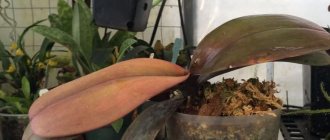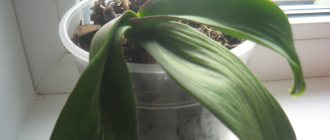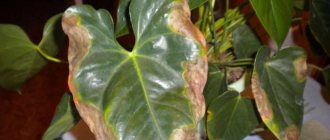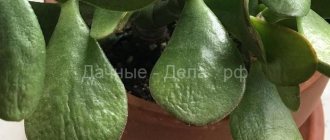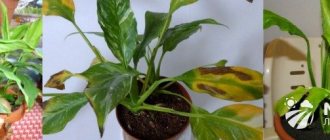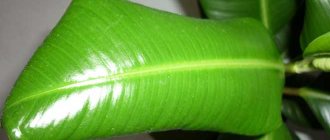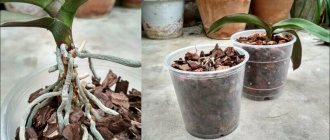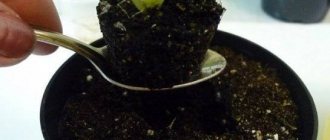Infectious nature
A significant change in the natural color of the leaf cover often occurs when the plant is infected with a virus or bacteria. If the leaves quickly change their shade, becoming paler or yellow, then there is a possibility that they have been affected by the dangerous yellow mosaic virus.
In most cases, the disease attacks plants at the beginning of the growing season, causing the leaf blades to become covered with yellow streaks and stripes. As the disease progresses, they turn into solid spots, and then the leaf begins to slowly dry out and fall off. As is known, the causative agent of the disease is a specific soil fungus called Polymyxa. It is found in the upper layers of the soil and is transferred to the crop being grown by contaminated tools.
The virus is also carried by all kinds of insects, including aphids. This is especially often noticed in plantings of plants from the legume family, where different types of aphids often live.
If the infection begins to affect the plant at the beginning of the growing season, then after a short time it may simply die. The lack of proper treatment leads to damage not only to the leaves, but also to the flowering elements, which play a key role in proper ripening and fruiting.
Often the appearance of chlorosis is explained by the activity of mycoplasma-like organisms , which can be carried onto green parts by the following types of insects:
- Psyllids.
- Cicadas.
- Nematodes.
In addition to indoor plants and vegetable crops, fruit trees and berry bushes also suffer from chlorosis. In this case, the disease is of a slightly different nature - the pathogen enters it through pollen or during vaccination activities. Most often, apple trees and stone fruits are affected by chlorosis. Due to significant necrotic changes that result from the development of the disease, the affected leaf cover begins to die, and yields are noticeably reduced. Also, the natural process of photosynthesis in plants is suspended.
Infected trees, bushes or garden plantings stop bearing fruit normally, and the ripening time of fruits is greatly slowed down. Their number is also decreasing. Gardeners from European countries talk about the massive death of vineyards from chlorosis.
The leaves of the flowers are brightening. What to do? *
I think it's worth adding iron chelate. White leaves are a sign of a lack of chlorophyll. Iron, magnesium, manganese and, apparently, boron are responsible for chlorophyll formation. Alternatively, use iron chelate. At one time it helped me with geraniums.
There should also be a Dutch drug sold in stores (I don’t remember the name :-[), which contains a complex of the above substances (it’s a bag of small granules). You can also water it with it.
Yandex writes that Ferovit is an iron chelate. What the girls advised
Highly concentrated nutrient solution. For root and foliar feeding of indoor, vegetable, fruit and flower plants.
It is a concentrated solution of chelated iron, which promotes better absorption of this microelement by plants. Designed for root and foliar feeding. .
Iron deficiency, called iron chlorosis, causes young leaves to turn light yellow or even white. Ferovit can be used prophylactically, as well as to quickly eliminate the onset of chlorosis .
. Overwater or overdry.
Actually, it's a strange story. Some plants become depressed in the autumn, but in such a mass order and with such a bouquet - the leaves are light, and wither, and fall off.
I pulled it out onto the windows, but on the windows the process of the leaves leaving the flowers only accelerates.
And how long did they stand on your windowsills that you only noticed a negative result? Where do they live now, how far from the windows?
All this looks like a lack of light.
They stood on the windows for 2 days.
. Well. There is no need to hope that there will be a sharp improvement in 2 days.
If I were you, I would think about the light first! And about ferovite - there is no need to feed it to plants whose leaves wither, fall off and shrivel. They are clearly sick, and fertilizers are simply contraindicated for them. We need to figure out how to care...
In St. Petersburg it was completely dark, at 15.30 it was already twilight, there was no sun at all for 4 weeks. And you have them three meters from the window - here, anyone can glue the fins together.
Buy at least energy-saving light bulbs (if all of them don’t fit on the window), and use them in your table lamps. At least it will make some sense.
I hope you check the soil with your hands before watering your plants?
Chlorophytums, arrowroots - once every 3-4 days
This is frequent watering with minimal lighting. I won’t say anything about other plants, but I now water these 1 r. in 1-1.5 weeks.
I pulled it out onto the windows, but on the windows the process of the leaves leaving the flowers only accelerates.
If you think the windows have gotten worse, perhaps the window sills are cold? Didn't you ventilate?
If you think the windows have gotten worse, perhaps the window sills are cold? Didn't you ventilate?
The window sills are really cool. But I have a double-glazed loggia throughout the entire apartment, so not a single draft can get through there. Why should I insulate the window sills separately now?
If there is a double-glazed loggia outside the window, then the window sills may not be so cold. ,)
Not really. The house is old and the window sills are not wooden but concrete. So it turns out that they are actually quite cold. My pots are ceramic, so the cold is transmitted very well. Maybe the roots are really freezing. You need to tie a scarf on each pot. Both beautiful and useful. But seriously, we need to install a heater, but it’s kind of scary. I'll dry out the air. again everything will not happen, thank God. You need good weather in St. Petersburg. Girls, how do you heat the flowers? :'(
You can buy a piece of foam plastic somewhere in a hardware store, cut it to the size of the window sill and lay it down, it will be warmer than on concrete.
My window sills were very cold until I had double glazed windows. And only cacti overwintered on them absolutely without watering. So there was no need to warm either the window sills or the flowers. . And the apartment was always warm.
But how is it for arrowroot - once every 1-1.5 weeks? The land is becoming dry and dry: sty002:.
My arrowroot lives purely under a lamp. Almost no light falls on it from the sun. soil - SA "Maranth". if I water it abundantly, then 1.5 weeks. the soil will definitely dry, if not too much, then within 1 week. I tried to water it more often - it died. Sonya wrote that the plants stood about 3 meters from the window. this is exactly the same as without light, but with frequent watering.
But I have a double-glazed loggia in the whole apartment
So you also have a loggia in front of the room! Those. There are 2 windows in front of the plants, and there is probably tulle on the window in the room. Flowers in the middle of the room. Sonya, they live in complete darkness!
I also have loggias for the entire apartment, southeast. Most of the plants live on the loggia itself and are not illuminated. They grow from high temperatures, but very slowly - even they don’t have enough light. And the part that lives on the window sill in the room is illuminated ! Because it’s already completely dark for them. The loggia is 110 cm wide and two windows with 5 glasses absorb light several times. Now you need lighting even on the window!
Fighting the disease
If the cause of chlorosis has been determined, it remains to find an effective way to combat it. As is known, the causative agent of a dangerous disease can enter a crop in a variety of ways. Accordingly , therapeutic measures must be radical and consist of a number of measures:
- Complex soil disinfection.
- Disinfection of instruments used to process crops.
- Fight against insects that can carry the virus.
- Cleaning seeds.
To effectively disinfect the soil, you can use a number of highly effective fungicides. These include chemicals that are popular among gardeners and are excellent at killing microorganisms that cause diseases.
It is customary to begin treatment activities in early spring, using solutions of copper and iron sulfate, as well as Nitrafen.
Some fungicidal preparations are supplied in dry form. These include Heterophos granules, which are deepened 10 centimeters into the soil around the crop being grown and then thoroughly spilled with water.
Some owners of gardens and vegetable gardens do not pay enough attention to the fact that all garden equipment needs to be disinfected. At the end of the season, the hoe and shovel must be disinfected with a solution of technical alcohol or boiling water. With these actions it will be possible to cleanse them of all kinds of parasites and microbes. During the cold season, instruments are stored in a cold storage room, because dangerous microorganisms are practically powerless there.
If there is a threat of infection, it is necessary to carry out comprehensive treatment of seed and planting material. The faster this is done, the more successful the further cultivation of plants will be. Pesticides are used as preparations, which significantly reduce the number of harmful insects that carry the pathogen.
Recommendations for restoring tomato seedlings
If the seedlings have lost their original appearance, then special attention must be paid to their care. First of all, you should adjust the feeding regime. After sowing, fertilizer should be applied no more than once every 2 weeks. For this you can use both mineral and organic preparations. The first fertilizing should be applied no later than 10 days after emergence. In this case, you will need to make a solution from nitrophoska. The next procedure is carried out a week later using wood ash and ammonium nitrate.
If the seedlings begin to grow rapidly, you will need to remove the two lower leaf blades. And then add a layer of soil in the form of a mound. As for watering, it must be sure. If the indoor air is too dry, an electric humidifier or a container with water and pebbles should be installed near the seedlings.
Do not forget about the choice of soil. It is best to use fertile soil for tomatoes, which is cultivated before use. There are several methods for this procedure, but it is best to calcine the substrate at high temperature in the oven.
The quality of seedlings is also affected by picking. If this procedure is not carried out in a timely manner, it will be very difficult for the seedlings to stretch out and restore their correct shape.
If the above recommendations do not help solve the problem, then you will need to use special preparations that are sold in garden stores. One of them is “Stop Growth”. The mixture contains nutrients that will saturate the plants with all the necessary microelements in a very short time. If everything is done correctly, the result will be noticeable in just a few days. After a week, the stems will strengthen significantly and become a little thicker.
Non-infectious causes
Often the cause of the development of chlorosis is unfavorable living conditions, including poor soil composition. If there is too much lime in the substrate or there is no optimal mineral balance, the plant begins to wither and lose the natural color of the leaves and stems . Among the most key elements, the lack of which causes chlorosis, we should highlight:
- Iron.
- Zinc.
- Seru.
- Magnesium.
However, not only a lack of individual elements leads to chlorosis, but also their excess. It is known that elevated levels of zinc, copper and manganese are among the most common causes of disease progression. Initially, light spots cover only some parts of the leaves, without affecting the veins.
Over time, the leaves begin to drill and die, and then the tops of the shoots. Young leaf blades that do not have the necessary immunity are at increased risk. To neutralize lime, colloidal sulfur should be added to the substrate or treated with a solution of sulfuric acid in a small concentration.
If the plant does not receive the required amount of iron, the leaves begin to quickly turn yellow, while the veins retain a green tint. To eliminate the problem, it is enough to use the highly effective “Ferrovit” or “Fe+” product. Timely treatment is the key to successfully combating non-infectious chlorosis.
With a lack of magnesium, loss of natural color appears from the edges of the leaves. In this case, they begin to lighten and then turn down. Over time, the yellowness spreads across the entire leaf, while the thickest and strongest veins remain intact. To avoid the progression of chlorosis, it is enough to treat the plant with magnesium sulfate.
Zinc deficiency leads to shredding of leaves, as well as the appearance of yellow specks on their surface. Over time, the leaves become faded yellow. To solve the problem, it is enough to plant alfalfa near the crop.
Lack of sulfur is the reason for the slowdown in development. In this case, the leaves begin to take on a light shade and then turn red.
The symptoms of the problem are almost the same as in the absence of the optimal amount of nitrogen. Sometimes, to determine an element that is in short supply, laboratory analysis is required.
The most vulnerable plants
To compile a list of plants most vulnerable to the development of chlorosis, it is necessary to evaluate their biological description. There is no clear answer to this question, because almost all green spaces respond negatively to a deficiency of important elements or the activity of pathogens. And both cultivated plants and wild ones growing in open ground are at risk. However, representatives of a separate group are so afraid of the disease that they may die from it.
So, the plants most susceptible to chlorosis are:
- Homemade - various varieties of hibiscus, citrus fruits, azaleas, gardenias and ficuses.
- In the natural environment there are fruit-bearing shrubs, including currants and raspberries, pears, apple trees, petunias, and roses. Among vegetable crops, representatives of the nightshade family stand out, and among berries - grapes and strawberries.
Treatment of chlorosis
How to treat leaf chlorosis is a sore subject for every caring gardener. Depending on the nature of the disease, a number of special measures must be taken. It all depends on proper preparation for planting and further care of the crop. To prevent the development of the problem, it is enough to follow the established recommendations of experienced colleagues and act radically.
As you know, chlorosis can be infectious and non-infectious. In the first case, it is necessary to carry out comprehensive disinfection of all elements that in any way come into contact with the plant. We are talking about soil composition, tools and seeds. A good preventative measure is to add biological fungicides to the substrate. They are also intended for seed treatment, which increases their resistance to infections.
As for gardening tools, they are treated with a rag soaked in alcohol or boiling water. In addition, the gardener needs to protect the plant from insects that carry the pathogen. In this case, various methods are used, including growing repellent plants, as well as strengthening the immunity of the crop.
Managing non-infectious chlorosis is a little different. As you know, the problem is caused by a deficiency of important microelements and vitamins. If it is not possible to determine the specific missing substance, you will have to treat the crop with complex fertilizers that contain a balanced combination of microelements . Such means include:
- "Florist Micro".
- "Uniflor Micro".
- "Hello."
The prepared solutions contain a high amount of the necessary substance that the culture requires. After performing several treatments, you will notice an improvement in the condition of the crop and the restoration of the natural color of the leaves and stem.
In addition to purchased products, folk remedies are extremely effective. It’s easy to prepare them at home, following step-by-step instructions. The main thing is to remember about balanced concentration and optimal dosage. In this case, treatment of chlorosis will be effective and quick.
Prevention measures
To prevent the appearance of insects on the apple tree, the following measures must be taken:
- clean the tree trunk circle in the fall from fallen leaves and fruits;
- timely destroy weeds in the tree trunk circle;
- carry out formative and sanitary pruning of the apple tree to avoid thickening of the crown;
- destroy anthills;
- carry out timely fertilization of trees;
- carry out three-time treatment with the biological preparation “Fitoverm” in the spring, before the start of sap flow, and in the fall, after harvesting the fruits, with mandatory irrigation of the tree trunk circle.

